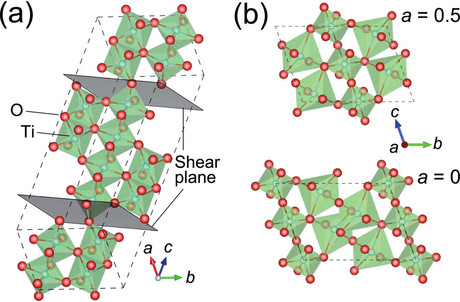Superconductivity discovered in thin films of titanium oxide

Japanese researchers have discovered superconductivity in thin films of titanium oxide (Ti4O7) and gamma-phase trititanium pentoxide (γ-Ti3O5), in a breakthrough that could one day be used to develop ultrafast computers.
Many of us are familiar in passing with titanium dioxide (TiO2), a whitener commonly used in sunscreens and paints such as the white lines seen on tennis courts. Less well known are other higher titanium oxides — those with a higher number of titanium and oxygen atoms than TiO — that are now the subject of intensifying research due to their potential use in next-generation electronic devices.
Now, researchers at the Tokyo Institute of Technology (Tokyo Tech) have reported superconductivity in two kinds of higher titanium oxides prepared in the form of ultrathin films, grown as part of the experiment for what is said to be the first time. Their research has been published in the journal Scientific Reports.
“In our study, instead of using conventional TiO2 as the starting material, we chose to begin with the slightly more reduced Ti2O3,” said lead author Kohei Yoshimatsu. Then, under precisely controlled atmospheric conditions, the Ti4O7 and γ-Ti3O5 films were grown layer by layer upon sapphire substrates in a process called pulsed-laser deposition.
“They are extremely difficult to grow,” admitted Yoshimatsu.
The thin films are epitaxial, meaning they have a well-aligned crystalline structure. And with a thickness of around 120 nm, these materials reveal properties that are only just beginning to be explored.
For example, until now, the materials had only been studied in bulk form, in which they behave as insulators — the opposite of conductors. The formation of electrically conductive thin films is thus seen as a big advance for fundamental physics.
Furthermore, the researchers found that the superconducting transition temperature reached 3.0 K for Ti4O7 and 7.1 K for γ-Ti3O5. Achieving 7.1 K even in simple metal oxides is “an amazing result”, said Yoshimatsu, as “it represents one of the highest known among these oxides”.
It is currently unknown exactly how superconductivity arises in these titanium oxides, though the irregular (non-stoichiometric) arrangement of oxygen atoms is thought to play an important factor. This arrangement introduces oxygen vacancies — unevenly distributed defects thought to create conductive electrons — that are not stable in bulk form. By creating just enough conductive electrons, the oxygen vacancies may help induce superconductivity.
Yoshimatsu said that more work will be needed to examine the underlying mechanisms. He noted that titanium oxides are cheap and relatively simple compounds made of only two kinds of elements, making them attractive for further research.
In addition, Yoshimatsu said that the study may advance the development of Josephson junctions — quantum mechanical devices consisting of a sandwich of two superconducting layers, which could in future be used to build new kinds of electronic circuits and, ultimately, faster computers.
A lighter, smarter magnetoreceptive electronic skin
Researchers have developed an innovative e-skin that facilitates a new level of interaction...
Single transistor used to implement neuromorphic behaviour
Researchers have demonstrated that a single transistor can mimic neural and synaptic behaviours,...
Novel fabrication technique for flexible electronics
Researchers have harnessed nature's intrinsic hierarchical fractal structures to improve the...





